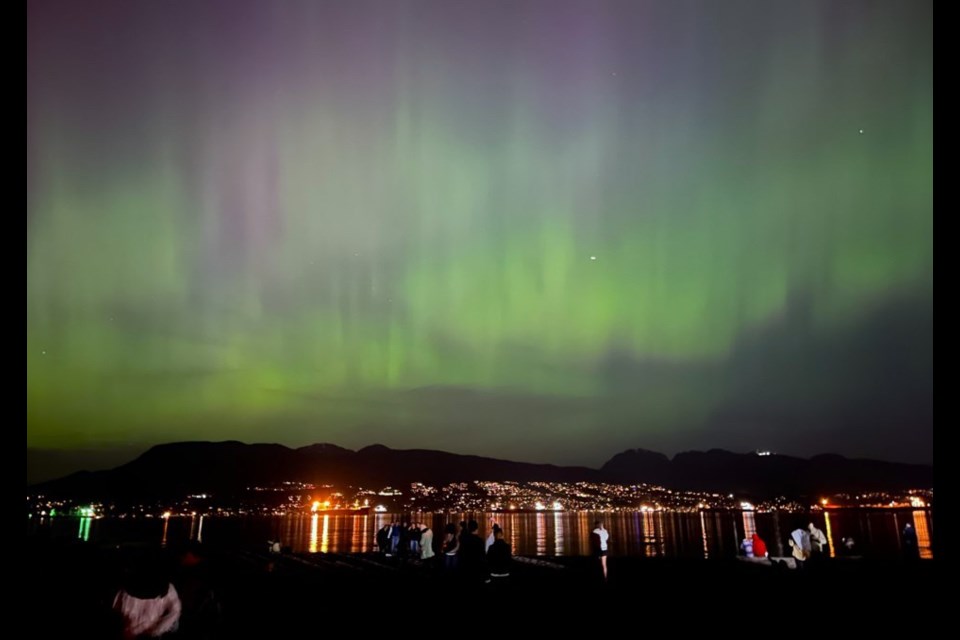Metro Vancouverites might see the northern lights dance low on the horizon on Saturday, June 8, but some cloud coverage may obscure them.
The Metro Vancouver weather forecast includes sunshine and temperatures climbing into the mid-20s on Saturday. V.I.A.'s Downtown Centre Weatherhood station shows a high of 24 C and a low of 15 C overnight.
But locals won't have to compete with the silvery light of a full moon. With the new moon on Saturday night, the sky will appear darker (a new moon is essentially the opposite of a full moon when the lunar disk isn't visible from Earth).
The National Oceanic and Atmospheric Administration (NOAA)'s Space Weather Prediction Center also observed minor (S1) and moderate (S2) solar radiation storms Saturday following a solar flare. More of these storms are "expected to persist through" Saturday (see slide two).
Metro Vancouver weather forecast includes dry conditions and a chance to view the northern lights
The University of Alaska Fairbanks (UAF) calls for active overhead auroral displays in several cities across North America including "from Inuvik, Yellowknife, Rankin and Iqaluit to Juneau, Edmonton, Winnipeg and Sept-Iles."
Other places, including the Lower Mainland, may observe the dancing lights low on the horizon, including from Vancouver, Great Falls, Pierre, Madison, Lansing, Ottawa, Portland and St. Johns (see slide three).
The university's online aurora monitor map shows what regions the aurora's green glow will likely reach, as well as other areas where there is less of a possibility. Additionally, there is a brief description below the map of the aurora activity on that particular day. You can switch to other days to see the forecast, too.
Locals will be less likely to see the dancing lights downtown. Instead, they should head to the dikes in Richmond, up the Howe Sound, or even more remote areas at UBC that aren't impacted by city lights.
The colours of the aurora often appear grey or milky when looking at the sky; the human eye doesn't always pick up colour at night, particularly when it is very dark.
While a camera with a long exposure is useful for capturing the vibrancy of the aurora, the newest cellphones have a darklight mode that will also capture colours the human eye can't see at night.
Stay up-to-date with hyperlocal forecasts across 50 neighbourhoods in the Lower Mainland with V.I.A.'s Weatherhood.



